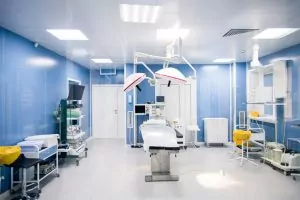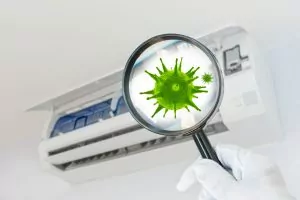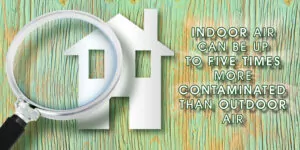Table of Contents
- 1 UV Light Disinfection in Hospitals
- 2 Healthcare-Associated Infections (HAIs)
- 3 UV Light Disinfection in Key Hospital Areas
- 4 Types of UV Light Disinfection in Hospitals
- 5 UV Surface Disinfection in Hospitals with 254 nm Germicidal Lamps
- 6 Cleaner, Healthier Air with UV Light Disinfection in Hospitals
- 7 Far UV-C (222 nm) for Safe In-Room Use
- 8 UV Air Disinfection and Odor Control: Crucial in Healthcare
- 9 Automatic Disinfection with UVC Robots in Hospitals
- 10 LightSources’ Hospital-Grade UV Lamp Solutions
- 11 UVC Germicidal Lamp Solutions for Safer Hospital Environments
UV Light Disinfection in Hospitals
UV light disinfection in hospitals plays a pivotal role in infection control, effectively reducing pathogens on surfaces, in the air, and on medical equipment. By integrating UVC systems, which typically emit 254 nm light, into daily cleaning routines, facilities can enhance traditional sanitation methods and significantly reduce the spread of healthcare-associated infections (HAIs). This targeted approach neutralizes harmful bacteria, viruses, and spores before they can reach vulnerable patients.
Healthcare-Associated Infections (HAIs)
Healthcare-associated infections occur during hospital care and contribute to significant patient morbidity, mortality, and financial costs. According to the U.S. Centers for Disease Control and Prevention (CDC, 2024, Nov, (1)), the most common types include central line-associated bloodstream infections (CLABSIs), catheter-associated urinary tract infections (CAUTIs), ventilator-associated events, surgical site infections (SSIs), MRSA bacteremia, and Clostridioides difficile (C. diff) infections.
Current Impact of HAIs:
- Approximately 1 in 31 hospitalized patients has at least one HAI on any given day
- In 2015, the CDC estimated 687,000 HAIs in U.S. acute care hospitals, resulting in about 72,000 deaths
- These infections cost the healthcare system billions annually and can prolong hospital stays and treatment complexity
By integrating UVC into routine sanitation protocols, healthcare providers can reinforce sterile environments, helping to prevent the contraction and spread of HAIs and ultimately delivering better care and confidence for both staff and patients.
UV Light Disinfection in Key Hospital Areas
 UV light disinfection in hospitals is crucial across various environments, providing an additional layer of protection against healthcare-associated infections (HAIs). By deploying germicidal UV-C light (typically at 254 nm), hospitals can effectively inactivate pathogens on surfaces and in the air, thereby supporting stricter infection control in both clinical and common areas.
UV light disinfection in hospitals is crucial across various environments, providing an additional layer of protection against healthcare-associated infections (HAIs). By deploying germicidal UV-C light (typically at 254 nm), hospitals can effectively inactivate pathogens on surfaces and in the air, thereby supporting stricter infection control in both clinical and common areas.
Patient Rooms and Isolation Units
In patient rooms, UV-C systems supplement manual cleaning by targeting surfaces where pathogens can accumulate, including bed rails, bedside tables, monitors, and nurse call buttons. These high-touch surfaces are common vectors for cross-contamination, especially in isolation rooms where exposure risks are elevated.
Operating Suites and Procedure Rooms
Surgical theaters require sterile conditions. UV-C lamps help maintain cleanliness by neutralizing airborne and surface pathogens before and after procedures. Their integration into surgical lighting, air ducts, and upper-room systems enhances infection prevention between cases and during downtime.
Emergency Departments and Waiting Areas
High-traffic emergency zones are exposed to a continuous influx of patients, staff, visitors, and germs. UV-C air and surface disinfection helps reduce the microbial load in exam rooms, check-in stations, and shared seating areas, thereby curbing the spread of airborne and surface-based infections in these densely populated zones.
Restrooms and Utility Spaces
Restrooms are frequent sources of microbial spread due to their moist conditions and high frequency of use. UV-C lamps installed near sinks, fixtures, and ventilation help sanitize surfaces and air continuously. Utility areas, such as linen storage and waste handling rooms, can also benefit from UV-C to reduce microbial buildup.
Corridors, Elevators, and High-Touch Public Areas
UV disinfection can be employed in hallways and elevator cabins using upper-room UVGI fixtures and portable units. These systems sanitize circulating air while remaining safe for occupied spaces. Push plates, elevator buttons, and handrails are particularly susceptible to contamination and can be effectively targeted with surface-mounted UV-C solutions.
Medical Equipment and Nursing Stations
UVC systems are also used to disinfect portable equipment and nursing tools such as IV poles, infusion pumps, and wheelchairs. A study validated that UV light can nearly eliminate colony-forming units (CFUs) on high-use nursing equipment after exposure, significantly lowering the risk of pathogen transmission from shared devices. (AJIC, 2025, May, (2))
By implementing UV light disinfection in these key locations, hospitals strengthen their overall infection control strategy, protect vulnerable patients, and improve staff and visitor safety throughout the facility.
Types of UV Light Disinfection in Hospitals
UV light disinfection plays a vital role in reducing infection risks across a wide range of hospital applications. From disinfecting patient room surfaces and high-touch equipment to neutralizing airborne pathogens in HVAC systems, UVC technology supports comprehensive infection control strategies. Today’s healthcare environments benefit from advanced technologies such as mobile disinfection robots and Far UVC systems, each engineered to meet specific disinfection goals while complementing manual cleaning and chemical-based protocols.
LightSources supports these critical disinfection initiatives with a full spectrum of UVC germicidal lamp solutions, including custom lamp design, engineering, and manufacturing. We offer custom phosphor blends and proprietary technologies such as LongLife+™ coating for extended operational life and stable UVC output and Shatter ProTech™, a safety-enhancing shield that contains glass and mercury in the event of accidental breakage, ideal for sensitive hospital environments where contamination must be avoided.
We offer OEM solutions, including prototype development and private label branding with custom logos and colors, to enhance brand awareness and identity. These capabilities allow medical equipment manufacturers and hospital system integrators to specify UV disinfection technology that meets stringent regulatory and performance standards. LightSources offers a broad range of lamp solutions for UV light disinfection in hospitals, including surface, air, robotic, and Far UVC applications.
UV Surface Disinfection in Hospitals with 254 nm Germicidal Lamps
 Hospital surfaces play a major role in the transmission of healthcare-associated infections (HAIs). From patient rooms to surgical suites, integrating UV surface disinfection helps reduce microbial load where manual cleaning alone may fall short. UVC systems are especially effective for disinfecting flat, high-touch surfaces and shared equipment. Learn more about UV Surface Disinfection.
Hospital surfaces play a major role in the transmission of healthcare-associated infections (HAIs). From patient rooms to surgical suites, integrating UV surface disinfection helps reduce microbial load where manual cleaning alone may fall short. UVC systems are especially effective for disinfecting flat, high-touch surfaces and shared equipment. Learn more about UV Surface Disinfection.
UV-C technology has been repeatedly proven to reduce bioburdens on hospital surfaces, offering strong efficacy against a range of pathogens, including both routine and drug-resistant strains.
Proven Against Coronaviruses: A detailed study published in Robust Evaluation of Ultraviolet-C Sensitivity shows SARS-CoV-2 and related coronaviruses (HCoV-229E, HCoV-OC43, MHV) are highly susceptible to 254 nm UVC, with only 1.2–1.8 mJ/cm² needed for a 1-log₁₀ (90%) reduction in viral load. (NIH, 2021, Oct (3)). LightSources offers UVC lamps for SARS-CoV-2 and proven UV light disinfection in hospitals.
Kills Tougher Pathogens: UVC is one of the few tools effective against resilient organisms, such as Clostridioides difficile (C. Diff) spores. Research demonstrates that a surface exposure of approximately 2,200 mJ/cm² over 20 minutes can inactivate nearly 100% of C. difficile spores. (Cureus, 2024, Oct, (4))
Meta-Analysis Supports Efficacy: A comprehensive review published in the Journal of Hospital Infection reports that combining continuous UVC with pulsed-xenon UV (PX-UV) systems achieves a reduction of up to 70% in infection rates for pathogens such as C. difficile and MRSA, and is most effective when used in conjunction with manual cleaning. (AJIC, 2010, June, (5))
Candida auris: A persistent, multidrug-resistant fungal pathogen that thrives in healthcare environments, especially high-dependency units. It can survive on surfaces and spread through patient contact or contaminated equipment, posing a serious risk to immunocompromised individuals. A 2023 NIH study demonstrated that continuous exposure to 254 nm UV-C light can inactivate over 99.97% of C. auris on room-sized surfaces within just 7 minutes. (NIH, 2019, Mar (6)) This evidence supports the use of UV-C as a powerful adjunct for surface disinfection in hospitals, enhancing control of C. auris alongside existing cleaning measures. Learn more about UV light to Kill Candida Auris.
Cleaner, Healthier Air with UV Light Disinfection in Hospitals
Hospitals often incorporate UV-C (254 nm) into air handling systems and room fixtures to continuously inactivate airborne pathogens and prevent microbial buildup on HVAC components. Upper room UVGI fixtures and UV lamps used in HVAC systems, furnaces, and air conditioning systems enhance indoor air quality (IAQ) to provide cleaner, healthier air in hospitals and healthcare facilities.
Upper-Room UVGI Fixtures
Upper Room UVGI fixtures are wall or ceiling fixtures that emit UV-C light in the upper portion of patient rooms, corridors, and waiting areas, safely out of the reach of occupants. Studies, including a clinical TB trial, demonstrate that upper-room UVGI can reduce tuberculosis transmission by approximately 70–80% in high-risk indoor hospital settings. (NIH, 2015, Aug (7)). CDC and NIOSH widely recognize UVGI in their official UVGI guidelines as a proven airborne infection control strategy (CDC, 2009, Mar, (8))
HVAC System UVGI
UV-C lamps installed inside HVAC air-handling units and ductwork serve dual purposes:
- Real-time air disinfection: As air passes over the UV-C bulbs, airborne bacteria, viruses, and spores are inactivated.
- Coil and biofilm control: UVC lamps prevent microbial growth on coils and drain pans, reducing energy use and the risk of microbial proliferation. Experimental data show up to a 99 % drop in microbial load on coils, enhancing HVAC efficiency while also improving safety. (AMCA, 2020, Oct, (9))
ASHRAE supports duct-mounted UVGI as a key component of indoor air quality systems and has published a dedicated technical chapter and standards that describe the design and placement for hospitals (ASHRAE, 2009, (10)).
When used together, upper-room and in-duct UVGI offer a layered approach to infection control, removing airborne contaminants in occupied spaces and treating recirculated air. All installations include safety measures such as shields, interlocks, and regulated irradiance levels to prevent unintended exposure. LightSources UVC germicidal lamps integrate seamlessly with hospital-grade UV systems and established air and surface protocols.
Learn more about the many ways that UVC germicidal lamps are used in UV air disinfection systems, including upper room UVGI and UV HVAC solutions.
Far UV-C (222 nm) for Safe In-Room Use
Far UV-C light at 222 nm offers powerful disinfection capabilities with improved safety for occupied environments. Unlike traditional UV-C at 254 nm, which can be harmful to human skin and eyes, 222 nm wavelengths do not penetrate the outer layers of the skin or the tear layer of the eye, making them a safer alternative for continuous use in populated healthcare spaces.
A recent systematic review and meta-analysis found that 222 nm UV-C delivers disinfection results comparable to 254 nm UV-C across a broad range of microorganisms. (Journal of Hospital Infection, 2025, (11)) The study highlights that several critical factors, including duration of exposure, proximity to the light source, and ambient environmental conditions, influence disinfection performance.
This positions Far UV-C as a transformative option for hospital settings where in-room air and surface disinfection are needed around the clock. LightSources’ Excimer lamp series is engineered specifically for this wavelength, offering filtered 222 nm output for safe and continuous disinfection. Learn more about Far UVC Light Bulbs: Effectiveness and Safety.
UV Air Disinfection and Odor Control: Crucial in Healthcare
In addition to infection control, UV-C systems can also support odor mitigation in hospital ventilation and facility management. Using ozone-producing UV lamps operating at 185 nm, these systems target volatile organic compounds (VOCs) that contribute to persistent or unpleasant odors. Through advanced oxidation, UV-generated ozone reacts with airborne pollutants, such as ammonia, hydrogen sulfide, and mercaptans, which are commonly found in wastewater handling, utility rooms, and lab ventilation ducts, breaking them down into less complex, neutral molecules.
Patient rooms are exposed to a variety of odors, including those from bodily fluids, bacteria, and cleaning agents. UVC air disinfection improves indoor air quality (IAQ) while reducing the need for chemical-based odor neutralizers. LightSources offers both standard and custom ozone-producing germicidal lamps, including low-pressure mercury and amalgam lamp configurations, designed for safe and compact integration into HVAC or ambient air systems. Learn more about UV-C Odor Control with Ozone-Producing Lamps.
Automatic Disinfection with UVC Robots in Hospitals
UVC robots are engineered for precision and consistency, delivering high-intensity UV light disinfection in hospitals through programmable routes, adaptive navigation, and large surface area exposure. These mobile systems autonomously navigate complex hospital environments, applying germicidal light to surfaces and air with uniform exposure, even in hard-to-reach areas that are often missed during manual cleaning. Robots equipped with real-time mapping capabilities continuously assess room geometry and adjust their movements to achieve maximum coverage. Onboard safety features, such as motion detection and automatic shutdown, ensure safe operation in clinical settings.
Cycle times have become increasingly efficient, enabling disinfection between patient discharges or overnight without disrupting workflow. This automation reduces the burden on environmental services staff and improves room turnover rates, which are critical metrics in high-volume departments such as emergency, surgery, and intensive care. Compared to fixed UV systems or manual devices, robotic solutions minimize variability in UVC dosage, helping to standardize cleaning outcomes across departments.
Operational benefits are matched by the long-term cost-effectiveness of UV robots. Facilities using UV disinfection robots report a measurable reduction in chemical use, prolonged life of cleaning equipment, and fewer healthcare-associated infections, resulting in shorter patient stays and reduced treatment costs. LightSources offers a range of UV Disinfection Robot Lamps engineered for durability, efficacy, and system integration.
LightSources’ Hospital-Grade UV Lamp Solutions
LightSources manufactures a wide range of germicidal UVC lamps engineered for critical healthcare environments. We offer high-tech, high-quality UVC germicidal lamps, including low-pressure mercury lamps, high-output and amalgam lamps for extended life and performance, as well as medium-pressure lamps for high-intensity applications. We also produce Far UVC and Excimer lamps optimized for safe use in occupied spaces, with a precise 222 nm wavelength output.
For original equipment manufacturers and hospital system integrators, we offer custom design services to meet exacting technical specifications. This includes proprietary phosphor blends, wavelength tuning, mounting and fixture compatibility, shield configurations for enhanced safety, and custom bases and sockets.
LightSources UVC lamps are deployed in healthcare systems worldwide to support infection control through effective surface and air disinfection. Our global reach and engineering expertise make us a trusted partner for hospitals, OEMs, and disinfection technology providers seeking customized, high-performance ultraviolet disinfection solutions.
UVC Germicidal Lamp Solutions for Safer Hospital Environments
UV disinfection is a proven complement to manual cleaning and chemical disinfection protocols. Integrated surface and air UVC systems can significantly reduce healthcare-associated infection (HAI) rates, especially when implemented as part of a layered infection control strategy. With decades of experience and proprietary engineering capabilities, LightSources is uniquely positioned to support hospitals and OEMs in deploying highly effective UV disinfection solutions.
Hospital administrators, infection control specialists, and equipment manufacturers are encouraged to contact LightSources to discuss application-specific UVC solutions for healthcare environments.
LAMP PRODUCT DATA:
UV Germicidal LampsLAMP Applications:
UV Germicidal ApplicationsLightSources offers trusted UVC germicidal lamps engineered for hospital air and surface disinfection systems. Our advanced, custom-engineered UV solutions provide effective pathogen control while enhancing facility safety and operational efficiency. Contact us to speak with an engineer about our germicidal lamps designed for UV light disinfection in hospitals.
References
- Centers for Disease Control and Prevention. HAIs: Reports and Data. https://www.cdc.gov/healthcare-associated-infections/php/data/index.html. Published November 2024.
- A validation experiment: Utilizing ultraviolet light to disinfect high use nursing equipment. American Journal of Infection Control. https://www.ajicjournal.org/article/S0196-6553%2824%2900907-6/abstract. Published May 2025.
- Biasin M, et al. Robust Evaluation of Ultraviolet-C Sensitivity for SARS-CoV-2 and Surrogate Coronaviruses. PubMed. https://pubmed.ncbi.nlm.nih.gov/34668746/. Published October 2021.
- Arens C, et al. Effectiveness of 254 nm UV-C Against Clostridioides difficile Spores on Hospital Surfaces. Cureus, 010a1931b5d09f2bc3db90f33bc693e8ca19.pdf, Published October 2024
- Nerandzic MM, et al. Applications of ultraviolet germicidal irradiation disinfection in health care facilities: Effective adjunct, but not stand-alone technology. American Journal of Infection Control. https://www.ajicjournal.org/article/S0196-6553%2810%2900420-7/fulltext. Published June 2010
- de Groot T, et al. Killing of Candida auris by UV‐C: Importance of exposure time and distance. PubMed Central. https://pmc.ncbi.nlm.nih.gov/articles/PMC6850319/, Published March 2019.
- Mphahlele M, et al. Institutional Tuberculosis Transmission. Controlled Trial of Upper Room Ultraviolet Air Disinfection: A Basis for New Dosing Guidelines. PubMed Central. https://www.ncbi.nlm.nih.gov/pmc/articles/PMC4595666/#sec7. Published August 2015.
- Centers for Disease Control and Prevention, National Institute for Occupational Safety and Health (NIOSH). Ultraviolet Germicidal Irradiation Guidelines for Healthcare Settings. https://www.cdc.gov/niosh/docs/2009-105/default.html. Published March 2009.
- Air Movement and Control Association International (AMCA). UV-C for HVAC Air and Surface Disinfection. https://www.amca.org/educate/articles-and-technical-papers/amca-inmotion-articles/uv-c-for-hvac-air-and-surface-disinfection-2.html. Published October 2020.
- ASHRAE. Ultraviolet Air and Surface Treatment, Chapter 62. I-P_A19_Ch62.fm., https://www.ashrae.org/file%20library/technical%20resources/covid-19/i-p_a19_ch62_uvairandsurfacetreatment.pdf, 2009.
- Disinfection efficacy and safety of 222-nm ultraviolet C compared with 254-nm ultraviolet C: Systematic review and meta-analysis. Journal of Hospital Infection. https://www.sciencedirect.com/science/article/pii/S0195670125000921. Published 2025.





